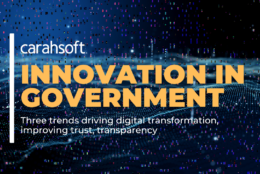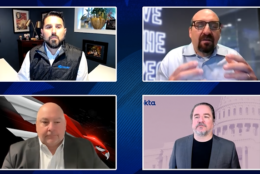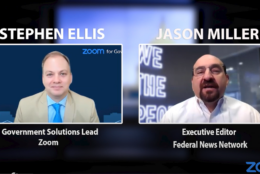Hubbard Radio Washington DC, LLC. All rights reserved. This website is not intended for users located within the European Economic Area.
On Air: Federal News Network
Innovation in Government
-
Mike Shortino, a principal digital strategist for federal civilian government at Salesforce, said by taking a platform approach to bring together data to make better decisions is leading to more trust and transparency in government.
April 14, 2023 -
Winston Chang, the federal chief technology officer at Snowflake, said the next generation of cloud services are giving agencies the tools to focus on business needs rather than the technology.
February 24, 2023 -
Cyber leaders at Customs and Border Protection, Education, FDIC and USCIS along with experts from Crowdstrike, Okta and Zscaler share their thinking on how to layer in security for zero trust while also minimizing friction on users.
December 15, 2022 -
Agencies have made their way down the zero trust path, but how are they working through the challenges? Jason Miller gets an industry perspective from Okta, CrowdStrike and Zscaler.
December 13, 2022 -
Bill Rowan, the vice president of public sector at Splunk, said agencies must move toward using real-time data to understand their technology environments and make changes to address security and citizens’ needs.
November 29, 2022 -
Agencies need to consider how best to use tools like continuous monitoring and how to integrate threat intelligence into their protections. All of these efforts are important to agencies as they digitally transform their services and processes and move more workloads to the cloud.
August 31, 2022 -
MK Palmore, the director of the Office of the chief information security officer at Google Cloud, said agencies can increase their cyber visibility through a shared security model.
July 07, 2022 -
Agencies have an opportunity to reduce costs and improve citizen services by moving away from paper forms.
May 24, 2022 -
Federal IT compliance is only enforced through self-reporting, so tracking action taken on security guidance is hard. Here’s why independent third-party capability is needed to monitor, track and verify compliance across the federal government.
April 20, 2022 -
Data is the connective tissue across all agency mission areas. No matter if you are serving citizens at the Social Security Administration or the IRS, or defending the homeland at the departments of Defense or Homeland Security, data will drive decisions. The challenge, of course, is data is always moving and changing.
April 20, 2022 -
Can artificial intelligence help agencies stay ahead of cyberthreats, especially as attackers get cleverer and potential attack vectors increase? BlackBerry CTO Charles Egan shares insights on why and how AI tools can help.
March 03, 2022 -
Stephen Ellis, the government solutions lead at Zoom, said agencies need to continue to innovate in how employees serve the citizens.
February 04, 2022 -
Chris Aherne, the vice president of federal at Smartsheet, said agencies can move toward a data-driven environment by focusing on a combination of people, process and technology. On the people side, Aherne said it’s a matter of training so employees understand how to use the tools at their disposal.
December 02, 2021 -
Juliana Vida, the group vice president and chief strategy advisor for public sector at Splunk, said agencies can use the momentum created by the cybersecurity EO, the funding from CISA and the technology advancements of the market to harden their cyber resolve.
December 01, 2021
















